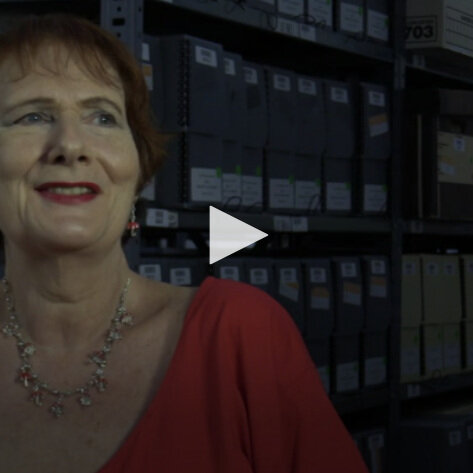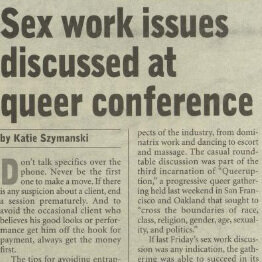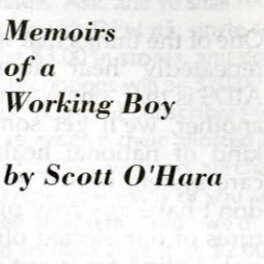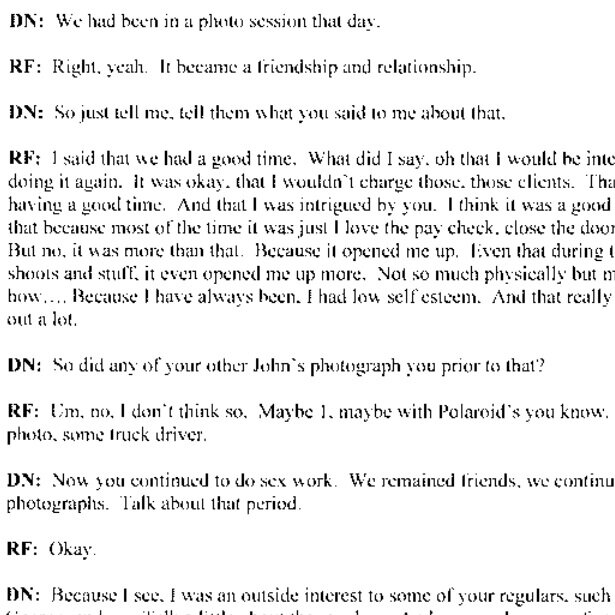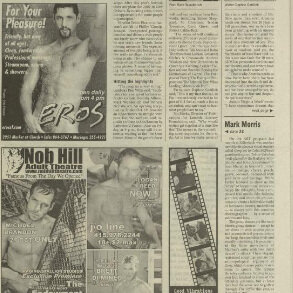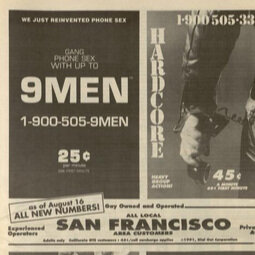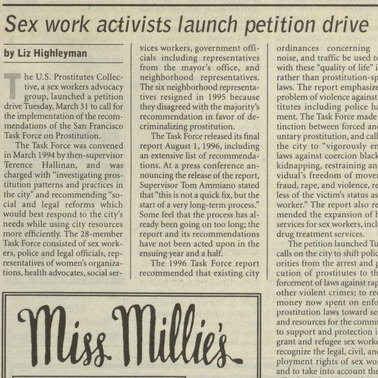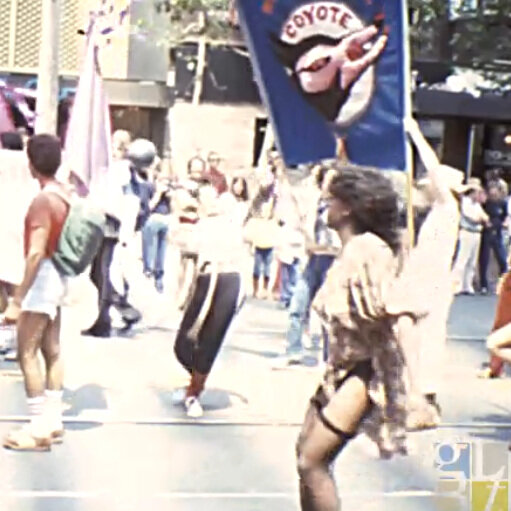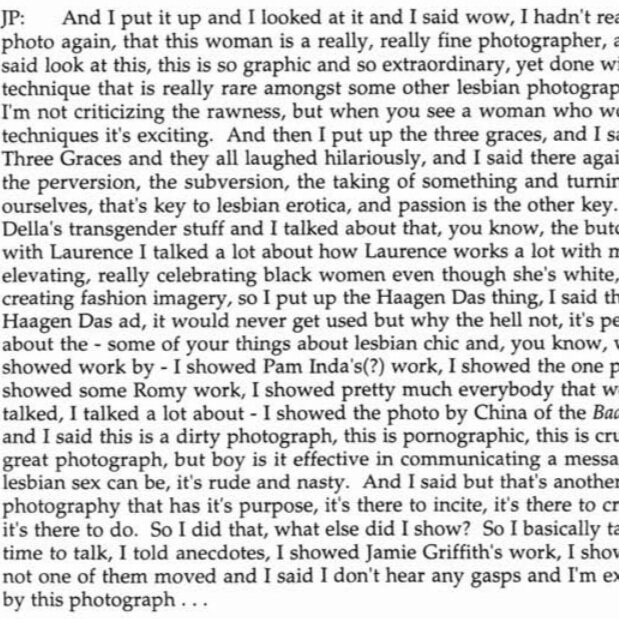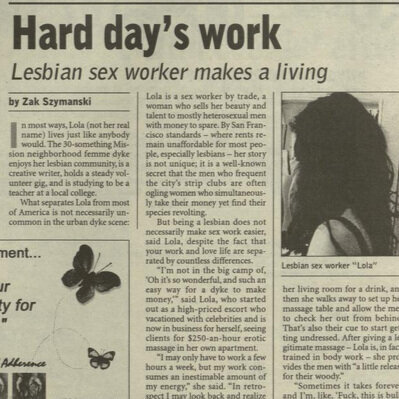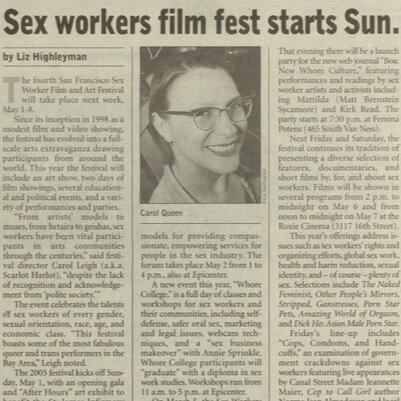Primary Source Set: sex work
While legal and social definitions vary, sex work can include people who provide sex for money directly, as well as people who make pornography and erotica, dance in strip clubs, answer phone-sex lines, offer sexual content online via webcam, and more. The term “sex work” is credited to activist Carol Leigh, aka Scarlot Harlot. It is used to acknowledge the labor of sex work and to destigmatize the work of individuals engaged in the industry.
Many sex workers are queer, and sex worker activists’ causes sometimes overlap with queer causes. Commonalities include the fight for sexual freedom, decriminalization of sex acts between consenting adults, the right to safety from AIDS and other sexually transmitted diseases, bodily autonomy, and protection from harassment and targeting by police.
Selected Source Set
Additional Resources
The Bay Area Reporter has extensive coverage of sex work. They have used the term since the 1990s, but “prostitution” will find earlier results.
The GLBT Historical Society maintains several collections relating to sex work, including the papers of pornographic actors Scott O’Hara and Rod Rockhard, as well as trans sex-work activists Tamara Ching and Victoria Schneider, and the records of Nob Hill Theatre. Contact reference@glbthistory.org for research questions or information about reproductions and permissions.
These primary source sets are just a small sampling of our digitized materials. Additional resources are available in our digital collections. Our extensive archival holdings are searchable through our catalog.


